
An example of conservation of momentum in two dimensions.
- Subject:
- Physical Science
- Physics
- Material Type:
- Lesson
- Provider:
- Khan Academy
- Author:
- Sal Khan
- Date Added:
- 11/16/2016

An example of conservation of momentum in two dimensions.

Nuclear energy might have a lot of unused potential. Not only is it one of the best mid term solutions for global warming bit despite what gut feeling tells us, it has saved millions of lives. By investing more into better technologies we might be able to make nuclear energy finally save and clean forever. The video "3 Reasons Why Nuclear Energy Is Awesome! 3/3" is a resource included in the Physics topic made available from the Kurzgesagt open educational resource series.
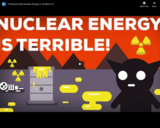
Nuclear energy might be a failed experiment. In over sixty years the technology has not only failed to keep its promise of cheap, clean and safe energy, it also caused major catastrophes and enabled more nuclear weapons while the nuclear waste problem is still not solved. The video "3 Reasons Why Nuclear Energy Is Terrible! 2/3" is a resource included in the Physics topic made available from the Kurzgesagt open educational resource series.

Renters play an important role as policy actors in urban structure. This text calls for a closer examination of renters as policy actors in Kitsilano, Vancouver, a gentrified neighbourhood with a critical housing shortage. AFFORDABLE-HOUSING INITIATIVES AND RENTERS’ RIGHTS artwork courtesy of Graham White.
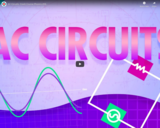
The video resource "AC Circuits: Crash Course Physics #36" is included in the "Media Literacy" course from the resources series of "Crash Course". Crash Course is a educational video series from John and Hank Green.

Ce livre est un hommage à son travail dont la portée et le caractère précurseur nous sont plus sensibles que jamais, près d’un demi-siècle après la publication de ses articles majeurs. Puissent les jeunes d’Afrique et d’ailleurs être nombreux à suivre son exemple! À noter que les textes présentés ici (à l’exception de l’article de 1969 sur « La conférence de Nairobi » et du cahier photographique) sont aussi publiés dans l’ouvrage que j’ai co-dirigé avec Mamadou Badji Du soleil pour tous. L’énergie solaire au Sénégal : un droit, des droits, une histoire (2018, Éditions science et bien commun).

The resource, "About Solar Reference Guide for Students" included in "Lesson 08 Power Resources" is a part of "Unit 05 Green Sustainable Facility Design" included in Energy & Sustainability ES - Course 3

At this point in the unit, students have learned about Pascal's law, Archimedes' principle, Bernoulli's principle, and why above-ground storage tanks are of major concern in the Houston Ship Channel and other coastal areas. In this culminating activity, student groups act as engineering design teams to derive equations to determine the stability of specific above-ground storage tank scenarios with given tank specifications and liquid contents. With their floatation analyses completed and the stability determined, students analyze the tank stability in specific storm conditions. Then, teams are challenged to come up with improved storage tank designs to make them less vulnerable to uplift, displacement and buckling in storm conditions. Teams present their analyses and design ideas in short class presentations.

Calculating the acceleration of a Porshe
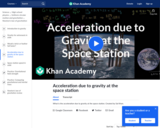
What is the acceleration due to gravity at the space station

Using what we know about takeoff velocity and runway length to determine acceleration

Students work as physicists to understand centripetal acceleration concepts. They also learn about a good robot design and the accelerometer sensor. They also learn about the relationship between centripetal acceleration and centripetal force governed by the radius between the motor and accelerometer and the amount of mass at the end of the robot's arm. Students graph and analyze data collected from an accelerometer, and learn to design robots with proper weight distribution across the robot for their robotic arms. Upon using a data logging program, they view their own data collected during the activity. By activity end , students understand how a change in radius or mass can affect the data obtained from the accelerometer through the plots generated from the data logging program. More specifically, students learn about the accuracy and precision of the accelerometer measurements from numerous trials.

Attempting a demonstration with hydrogen peroxide, The Professor stumbles over an alternative!

This video is from the Khan Academy subject of Science on the topic of Cosmology and astronomy and it covers Accreting mass due to gravity simulation.
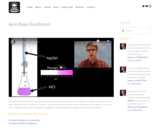
Paul Andersen explains how acid-base chemistry can be understood in terms of equilibrium. Water is present in all acid-base chemistry and is amphoteric in nature. The Ka and Kb values can be used to determine the strength of an acid or a base. Titrations can be used to student neutralization reactions between strong and weak acids and bases.

The video resource "Acid-Base Reactions in Solution: Crash Course Chemistry #8" is included in the "Chemistry" course from the resources series of "Crash Course". Crash Course is a educational video series from John and Hank Green.
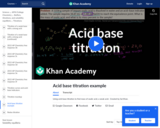
Using acid-base titration to find mass of oxalic acid

Acetic Acid to Acetyl Chloride mechanism. Can be generalized to forming any acid halide from a carboxylic acid
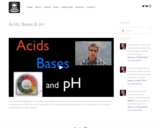
Paul Andersen explains pH as the power of hydrogen. He explains how increases in the hydronium ion (or hydrogen ion) concentration can lower the pH and create acids. He also explains how the reverse is true. An analysis of a strong acid and strong base is also included.

The course treats the following topics: - Relevant physical oceanography - Elements of marine geology (seafloor topography, acoustical properties of sediments and rocks) - Underwater sound propagation (ray acoustics, ocean noise) - Interaction of sound with the seafloor (reflection, scattering) - Principles of sonar (beamforming) - Underwater acoustic mapping systems (single beam echo sounding, multi-beam echo sounding, sidescan sonar) - Data analysis (refraction corrections, digital terrain modelling) - Applications (hydrographic survey planning and navigation, coastal engineering) - Current and future developments.